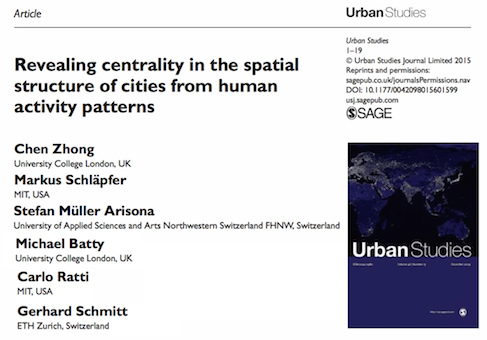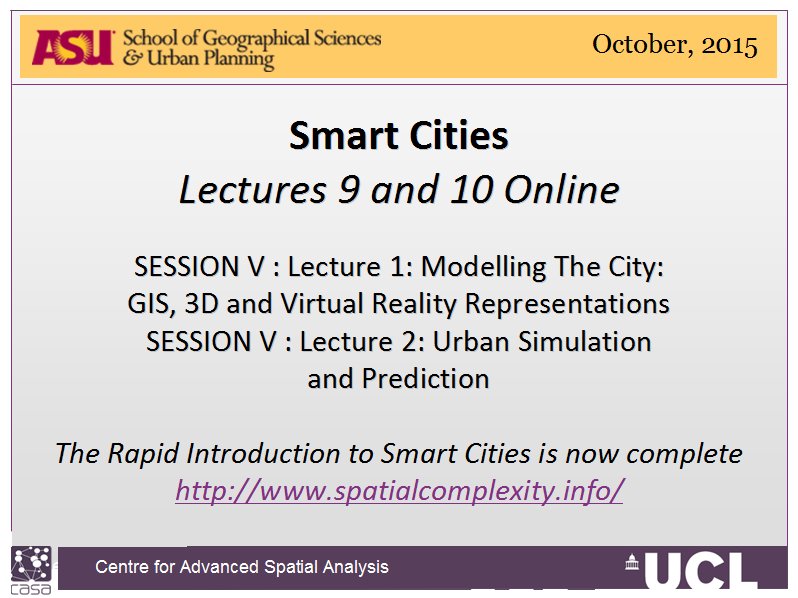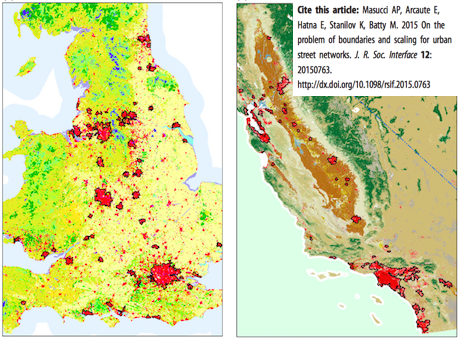Chen Zhong (CASA) and her colleagues from ETH and MIT continue to produce interesting analyses from work with the EZ-Link data in Singapore. She introduces some interesting entropy measures along with other indices in revealing centrality in activity patterns. Her paper can be downloaded here as a pre print on the Urban Studies site.
The Last Two Lectures (9, 10)
The last two lectures of this course (lectures 9 and 10 which are 1 and 2 in session 5) are online, accessible by clicking here. For those on CASA’s MSc in Smart Cities course, these are background material and without my ‘voice over’ or ‘presence’, you may find them a little unstructured. But they do introduce some issues about the evolution of smart cities, the history of computing and the focus on urban analytics for routine management, control and simulation of things like transit in cities. Send me any email if you want more information. All 10 lectures have now been posted.
On the Problem of City Boundaries
Paolo Masucci led this study based on defining city boundaries – one of the key research issues in CASA on our Mechanicity project – introducing a really simple idea that cities grow to a condensation threshold after which the city is ill-formed. The threshold can be detected using clustering and in some senses the giant cluster sets this boundary. We show here how UK cities and cities in California, when normalized, collapse onto the same logistic curve which defines the point at which this threshold and hence boundaries can be determined. Here is the abstract of the paper below. Click here to get the PDF but if you want to get the open access paper in the Journal click here instead.











